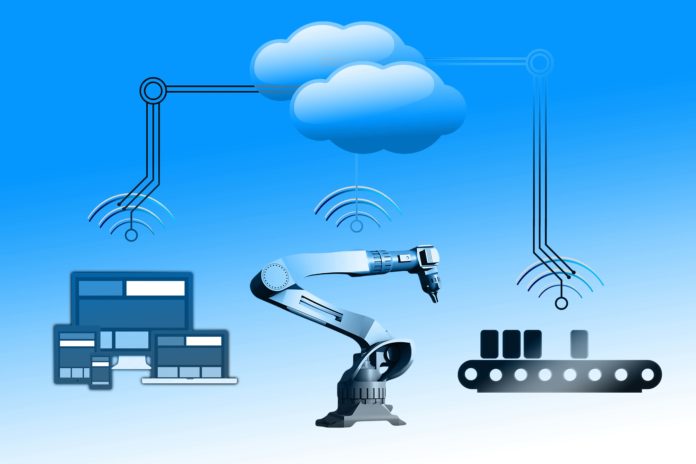Microsoft’s 2019 Manufacturing Trends Report explores the six emerging developments that empower manufacturers to design more intelligent operations and increase the speed and efficacy of doing business as themanufacturer.com reports.
As today’s technology transforms manufacturing into a highly, connected, intelligent and more productive industry, modern manufacturers have become more than just makers – they’re the thread that connects the entire lifecycle of a product.
The six trends include:
- IT and OT converge – IT systems merge with operational technologies
- The rise of XaaS – manufacturers evolve their business models
- Intelligent manufacturing – connected intelligent system make manufacturing smarter
- Manufacturing technology evolves – new technologies are revolutionising production
- Businesses adapt to an evolving workforce – a new generation enters the workforce
- Living in the age of uncertainty – uncertainty puts strain on business
Key takeaways:
IT and OT converge
In today’s world of connected, intelligent manufacturing, the convergence of IT and operational technology (OT) is an inevitability.
The IT systems used for data-centric computing are increasingly being merged with OT systems used to control and monitor processes and devices. The result? Smarter, more efficient operations.
- 13 billion – the amount of connected IoT devices by 2021
- 159% – the increase in sales of collaborative robots between 2018 and 2020
- 44 cents – the average cost of a sensor in 2018, nearly 200% less than in 2004
- $772bn – the amount of global IoT spend in 2018, surpassing $1 trillion in 2020
The rise of XaaS
Driven by growth of the IoT and the cloud, many organisations are moving from product business models to service-based models, giving their customers more options with greater flexibility.
By leveraging technology to get closer to the end user, manufacturers can improve future iterations of their products, deliver better user experiences, provide superior services and improve sales.
While XaaS has historically referred to cloud computing, it is increasingly being used to define all as-a-service-based business models, including: Design, Experimentation, Equipment, Simulation, Management, Maintenance, and Integration.
- 20% – the number of G2000 manufacturers who will depend on technologies like IoT and machine learning to automate large-scale processes by 2021
- $57bn – projected size of the ‘on-demand economy’ in 2018
- 40% – the number of top 100 discrete manufactures who will provide Product-as-a-Service platforms by the by the 2018 (the figure stands at 20% for process manufacturers)
- $5.6bn – the size of the global sensors and controller market in 2018
Intelligent manufacturing
Augmented with smart sensors and advanced data processing, manufacturing is more connected and intelligent than ever.
Artificial intelligence (AI), for example, is extremely effective at performing four categories of tasks: detection, classification, probability and optimisation – each of which have clear applications within a manufacturing environment.
- 20% – the number of G2000 manufacturers who will have moved to an intelligent production model by 2021
- 31% – the number of businesses planning to implement intelligent systems over the coming year
- $2.9 trillion – the global business value AI is expected to generate by 2021
- 10,000 Mbps – the data-transfer speed a 5G network can deliver
Manufacturing technology evolves
Manufacturing technology continues to advance, unlocking new opportunities to improve production processes, support employees and create new, innovative products.
‘Digital Twins’, for example, are a digital replica (or simulation) of a real-world system – be that process, product or environment. Digital twins allow product designers to quickly and easily test out different product variations and simulate the effects of various different environmental conditions.
- $67bn – global spend on robotic systems by 2025
- 30% – the number of G2000 companies that will use digital twins and IoT connect products to improve product innovation and organisational productivity by 2020
- $56bn – projected size of the global additive manufacturing market by 2027
- 20% – the number of large businesses that will use AR, VR or mixed reality in some way by 2019
Businesses adapt to an evolving workforce
Leaders in the manufacturing sector are aware of the impact that the ageing workforce may have on their businesses in the years to come.
As ‘Boomers’ approach retirement and a new, young, highly-educated workforce enters the marketplace, businesses are being forced to rethink how they operate.
The same disruptive force that enabled companies to move jobs overseas – technology – may now be responsible for bringing them back onshore.
- 736,000 – forecast number of data scientists needed by 2024, of which only 438,000 are expected to be available
- 71% : 29% – the current gender split between men and women working in manufacturing
- 60% – the amount of open production positions currently unfilled because of a talent shortage
Living in the age of uncertainty
In an incredibly polarised political environment, attitudes can shift on a dime, making it difficult for companies to plan for the future.
Over the past 18 months, a string of major regulatory changes has been initiated and enacted from GDPR to trade tariffs. These regulations span across a wide range of disciplines and touch on nearly every business.
- 49% – the number of business leaders who feel that they are exposed to more uncertainty today than they were three years ago
- 66% – the number of consumers who felt it was important for brands to take a public stand on social and political issues
- 47% – the number of executives who are preparing their companies for an influx of entrants from other sectors, a 27% increase from 2013
- 36% – the number of European IT professionals who felt well informed about GDPR and its impact on their business

















































